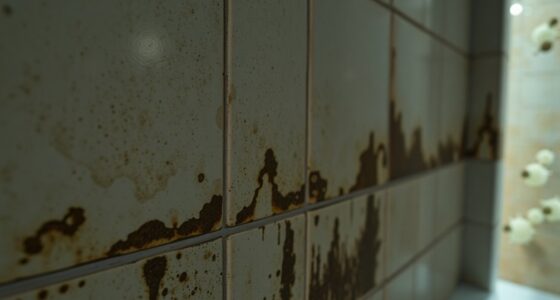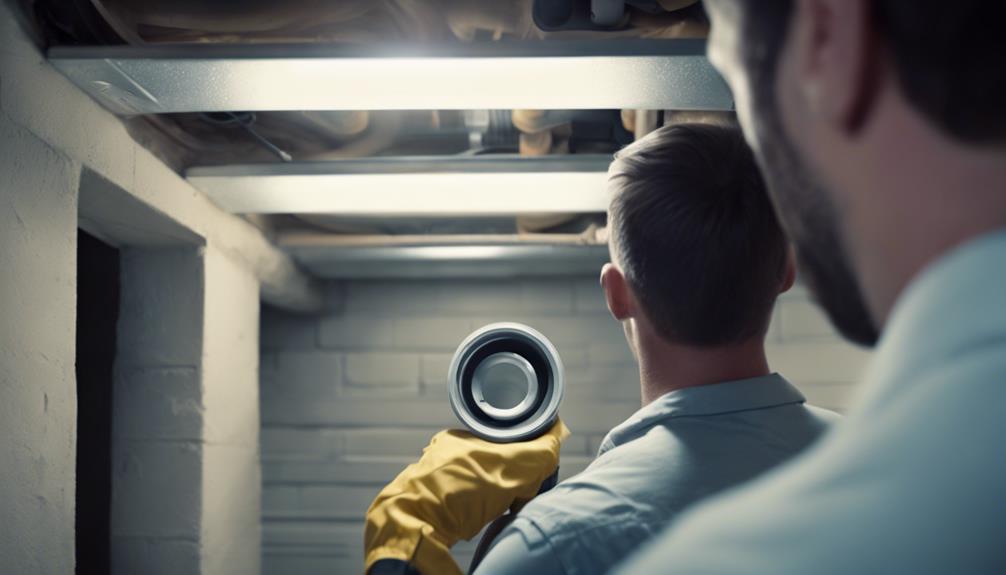When you can't immerse equipment in water for cleaning, try solvent-based solutions, dry cleaning methods, and UV-C light technology. These options offer effective ways to sanitize and maintain your equipment without risking damage. Remember, keeping your equipment clean is essential for peak performance and safety.
Key Takeaways
- Utilize solvent-based cleaners for residue-free, gentle yet effective cleaning.
- Employ dry cleaning methods like brushes and cloths for delicate equipment.
- Consider UV-C light technology and dry ice blasting for innovative sanitation.
- Explore chemical sanitizers and clean-in-place systems for diverse equipment materials.
- Consult experts like Graymills for tailored non-immersible equipment cleaning solutions.
Immersion Cleaning Alternatives
When immersion cleaning isn't feasible, you can consider alternative methods such as spray cleaning, foam cleaning, and wipe-down techniques for effectively cleaning and sanitizing equipment.
Spray cleaning involves using nozzles under pressure to apply a cleaning solution onto equipment surfaces, ensuring thorough coverage and removal of contaminants.
Foam cleaning creates a foam from a detergent solution that sits on surfaces, providing extended contact time for better cleaning results.
Wipe-down methods require manually wiping equipment surfaces with cleaning agents and sanitizers, making it a versatile option for various equipment types.
These alternatives offer efficient ways to clean and sanitize equipment that can't undergo immersion cleaning, maintaining hygiene standards in diverse settings.
Solvent-Based Cleaning Solutions

Consider utilizing solvent-based cleaning solutions as an effective alternative for cleaning equipment that can't be immersed in water. Solvent-based cleaners are specifically formulated to tackle stubborn residues and contaminants on surfaces, making them ideal for delicate equipment or electronics that could be damaged by water exposure.
Here are some key benefits of using solvent-based cleaning solutions:
- Effective Residue Removal: Solvent-based cleaners dissolve and remove tough residues effectively, guaranteeing thorough cleaning.
- Non-Aqueous Cleaning: These solutions provide a non-aqueous cleaning method, evaporating quickly without leaving any residue behind.
- Versatility: Solvent-based cleaners are versatile and can be utilized across various industries for efficient cleaning and degreasing purposes.
- Gentle on Equipment: Due to their non-abrasive nature, solvent-based solutions are gentle on equipment while still offering powerful cleaning capabilities.
Incorporating solvent-based cleaning solutions into your equipment maintenance routine can help guarantee thorough cleaning without the need for water immersion.
Equipment Cleaning Without Water

To clean equipment without using water, explore various dry cleaning methods such as brushes, cloths, and air compressors. These tools can effectively address your cleaning needs without the use of water.
For stainless steel equipment, a soft cloth can be used to wipe down surfaces and remove any visible dirt or grime. Once the equipment is cleaned, it's crucial to properly sanitize it to make sure the removal of any harmful bacteria or contaminants. Consider using a chemical sanitizer that's readily available and safe for the specific equipment material.
For a more automated approach, you can utilize clean-in-place (CIP) systems that can clean and sanitize equipment without water immersion. Additionally, heat treatments or steam cleaning can help sanitize equipment surfaces effectively. UV-C light technology is another innovative method for sanitizing equipment without water contact.
If you're looking for a non-water cleaning method, dry ice blasting can also be considered for equipment sanitation.
Effective Contaminant Removal Methods

For effective removal of contaminants from equipment, utilize mechanical scrubbing and wiping with cleaning agents to target specific areas thoroughly.
When cleaning and sanitizing equipment that can't be immersed in water, consider the following methods:
- Mechanical Scrubbing and Wiping: Use brushes, cloths, and sanitizing wipes to scrub and wipe surfaces for a thorough clean.
- Chemical Sprays: Utilize specially designed sprays and foams for non-immersion cleaning to penetrate tight spaces and eliminate bacteria and debris.
- Steam Cleaning: Employ steam cleaning as a powerful method to sanitize equipment without water immersion, effectively killing germs and removing dirt.
- Ultrasonic Cleaning: Consider using ultrasonic cleaning devices that use high-frequency sound waves to dislodge contaminants and provide a deep cleaning action for equipment that can't be submerged.
Expert Guidance for Cleaning Tasks

Rely on Graymills for expert guidance on specialized cleaning techniques for equipment that can't be immersed in water. When faced with non-immersible equipment, Graymills provides industry-specific knowledge and innovative solutions to tackle unique cleaning challenges.
By offering alternative cleaning methods and effective sanitizing techniques, Graymills guarantees your equipment remains clean and safe for operation.
For clean-in-place (CIP) processes or other scenarios where traditional immersion cleaning isn't an option, Graymills offers tailored recommendations to meet your specific needs. Whether you're in the food industry, pharmaceuticals, manufacturing, or any other sector with stringent cleaning requirements, Graymills can assist you in maintaining high standards of cleanliness.
Trust Graymills to deliver expertise in handling non-immersible equipment, providing you with the necessary tools and know-how to address even the most complex cleaning tasks. With Graymills by your side, you can confidently navigate the challenges of cleaning equipment that can't undergo traditional immersion methods.
Frequently Asked Questions
What Is the Immersion Cleaning Method?
The immersion cleaning method involves submerging equipment in a cleaning solution for a specified time. It is effective for reaching inaccessible areas and removing contaminants. Factors like agitation, temperature, and chemistry influence its success.
How Do You Disinfect Electrical Tools That Cannot Be Immersed?
To disinfect electrical tools that can't be immersed, wipe them with alcohol wipes or sprays. Use UV-C light sanitizers for effective surface disinfection. Consider disinfectant sprays or solutions with a cloth, or utilize foggers for hard-to-reach areas.
What Is the Acceptable Way of Sanitizing Item in Water?
To sanitize items in water effectively, guarantee full immersion in the sanitizing solution following the manufacturer's dilution ratio. Proper rinsing after disinfection removes residual sanitizer. Water temperature and solution concentration are critical for successful sanitization.
What Are the Three Types of Sanitizing Methods?
When it comes to sanitizing, remember the three main methods: thermal, chemical, and radiation. Thermal uses heat, chemical employs approved sanitizers like chlorine, and radiation utilizes UV light to kill harmful bacteria effectively.
Conclusion
To summarize, when faced with the challenge of not being able to immerse equipment in water, it's crucial to explore alternative cleaning methods.
By utilizing solvent-based cleaning solutions and effective contaminant removal techniques, you can guarantee that your equipment remains clean and sanitized.
Remember, expert advice is always available to help you with handling these cleaning tasks skillfully.










